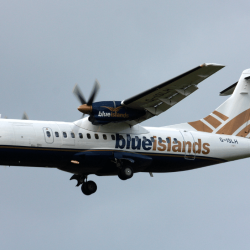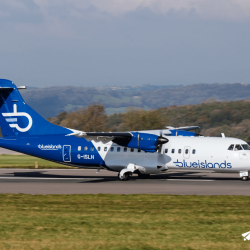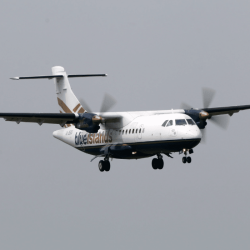Blue Islands: A Regional Airline’s Journey from Cargo Flights to Channel Islands Lifeline
From humble beginnings as a cargo operator to becoming a vital regional connector in the Channel Islands, Blue Islands carved a distinctive path in British aviation. Here’s a look back at its evolution, milestones, and legacy. Blue Islands Airlines, based in the Channel Islands, operated several key routes connecting the South West of England with Jersey and Guernsey before ceasing operations in November 2025. Its year-round network included flights from Jersey to Bristol and Exeter, as well as services to Southampton and East Midlands. Bristol Airport was a major hub for the airline in the region, offering up to 10 flights per week to both Jersey and Guernsey. Seasonal routes expanded the network further, with summer services to destinations such as Dublin, Newcastle, Norwich, and Paris. Additionally, Blue Islands was scheduled to operate flights between London Gatwick and Newquay in Cornwall on behalf of Skybus, highlighting its role in maintaining vital connectivity for the South West.
Blue Islands began life in 1999 as Le Cocq’s Airlink, a small operation founded by Le Cocq’s Stores in Alderney. Its initial mission was pragmatic: transporting perishable goods from Bournemouth to Alderney using Britten-Norman Islanders. By 2002, the airline expanded into passenger services on the same route, carrying 10,000 passengers in its first year. In 2003, the airline rebranded as Rockhopper, signaling its growing ambitions. That year, it doubled its passenger numbers and began laying the groundwork for a broader regional presence. The pivotal transformation came in 2006 when the airline adopted the name Blue Islands, coinciding with the delivery of its first BAe Jetstream 32 aircraft. This marked its emergence as a full-fledged regional carrier, with 63,500 passengers flown that year. July 2009 saw the introduction of Blue Islands first ATR 42-320 G-DRFC. Rob Veron became Chief Executive Officer in 2011 having worked his way up through business and initiated the shift to a all ATR fleet, the company around that time were still operating a small number of British Aerospace 3112 Jetstream 31, a Dornier 328-110 and a Fokker 50. With the retirement of G-ISLD a British Aerospace 3202EP Jetstream 31 in November 2014 the company was operating a all ATR fleet
In 2016, Blue Islands entered a franchise agreement with Flybe, adopting its branding while maintaining independent operations. This partnership expanded its reach and sales channels, though Blue Islands retained its own aircraft and crews. By 2019, the airline had launched new routes to East Midlands and Newquay, established its own ground handling at Guernsey Airport, and served a record 415,000 passengers.
The collapse of Flybe in March 2020 (A topic we have covered previously here) forced Blue Islands to quickly reestablish its own booking systems. The onset of the COVID-19 pandemic further disrupted operations, reducing flights to essential services under government contracts. Despite these challenges, Blue Islands continued to serve as a lifeline for the Channel Islands, particularly for medical travel and essential connectivity. The airline received an £8.5 million loan from the Government of Jersey to sustain operations during the crisis. On 14 November 2025, Blue Islands abruptly suspended trading and cancelled all flights, citing insurmountable financial pressures. The closure left passengers stranded and marked the end of a 26-year journey that had begun with a single cargo route and grown into a regional network spanning the UK and Europe. Blue Islands was more than just an airline it was a community connector. With bases in Guernsey and Jersey, it played a crucial role in inter-island travel, medical transport, and regional tourism. Its story is one of adaptability, ambition, and service, leaving a lasting imprint on the skies over the Channel Islands.
Report By Matt Sudol, Gary Morris, & Kev Slade
© South West Aviation Photographers 2025










